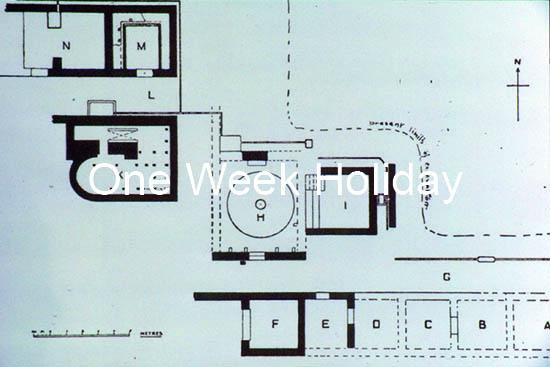The Roman baths along the road from Mġarr to Gћajn Tuffieћa were unearthed by accident in 1929, but archaeologists and other experts are still discovering things at the site.

So said the deputy leader of excavations, Heritage Malta’s David Caruana, who was speaking at a lecture organised byDin l-Art Ħelwa last week.
The baths were discovered when workers were digging down to pass a conduit to enable the flow of water to water the fields. A certain Mr Rizzo, presumably their foreman, informed Sir Temi Zammit that, under some three feet of soil, they had discovered remains that they thought were archaeological.
The subsequent excavations confirmed that these were extensive Roman baths. Six Roman bath complexes are known to have been discovered around Malta, including one, improbably, in Floriana. Others have been found at Ramla l-Ħamra in Gozo and Marsaxlokk.

People at the DLH lecture queried why the baths at Gћajn Tuffieћa had been built in such a remote area in the first place. It could be, Mr Caruana replied, because several water streams converge at that point and provide a steady flow of water, essential for public baths.
In addition, although the area is rather deserted today, it was quite heavily populated in Roman times, as testified by burials in Zebbiegћ and Mġarr – in fact this was true of the entire area from Rabat/Mdina to the nearby ports of Ġnejna and Gћajn Tuffieћa, and Burmarrad.
Although it has not as yet been totally excavated, it would seem that the site was fairly extensive, with no fewer than 12 places in the communal latrine and possibly a small and rudimentary hotel-like structure in which people could stay overnight.
Strangely, one of the first items to be excavated by Sir Temi in 1929 was a large structure called a ‘trapezium’ (shower tray) which, according to Mr Caruana, can nowadays be found in the reception area of the Paradise Bay Hotel.
The Temi Zammit excavations are documented in one-and-a-half notebooks with pen drawings that still exist today. Some photographs from that time are also extant and they help present-day archaeologists determine many details on site.
But Italian archaeologists, working on the site in 1982, dug four trenches but left no documentation at all.
Today’s excavations form part of a €6 million project entitled For a Rehabilitation of the Roman Baths and Christian catacombs at Mosta and Mgarr, part-funded by EU Rural Development Funds.
The two sites are not linked in any way, and the project intends to clean and open up the catacombs at Ta’ Bistra in Mosta. With regard to the Roman Baths near Gћajn Tuffieћa, the project intends to fully explore the entire area and subsequently roof over the site and set up an Interpretation Centre.
The Roman Baths complex has everything one would expect to find in Roman baths of the time, with a tepidarium(lukewarm water), a frigidarium (cold water and a caldarium (what we would call a ‘sauna’ today). Each was fed by tunnels channelling the water flow and the caldarium was built on arches so that the water could be heated.
Apart from all this, there was also a huge swimming pool, the natatio. Although the part that has been excavated up to now is somewhat elliptical in shape, further excavation under the nearby road will doubtless reveal a rectangular pool.
The current excavation has been proceeding by means of a series of 10 trenches dug around the site. Generally, they have uncovered alterations made to the original site as a result of change of use. For instance, the step that goes around the big pool is sometimes the basis for yet another construction. Before the latest work began, a GPR survey was taken of the whole area, including fields that have not been excavated. Some of these fields have yielded nothing, but others await further excavation.
Tiles, pottery and fragments of water pipes, as well as mosaic fragments have been found and it has all been documented and stored.